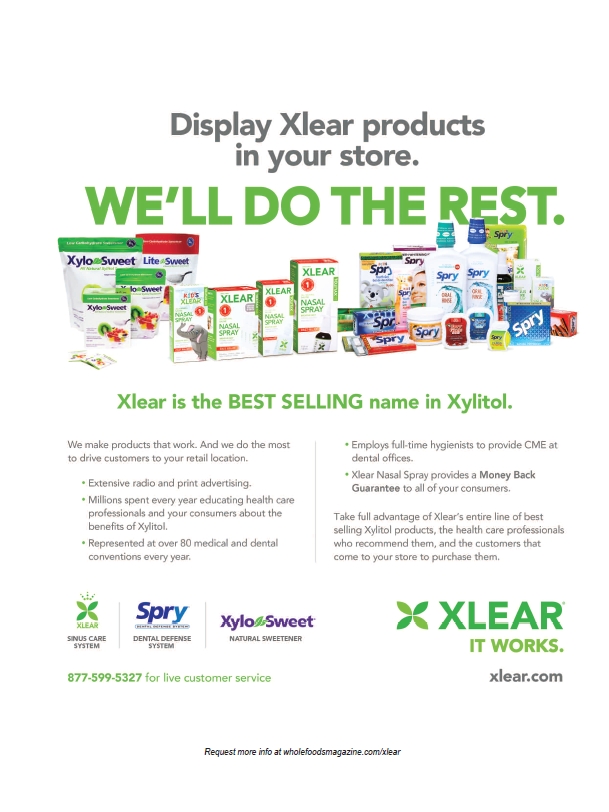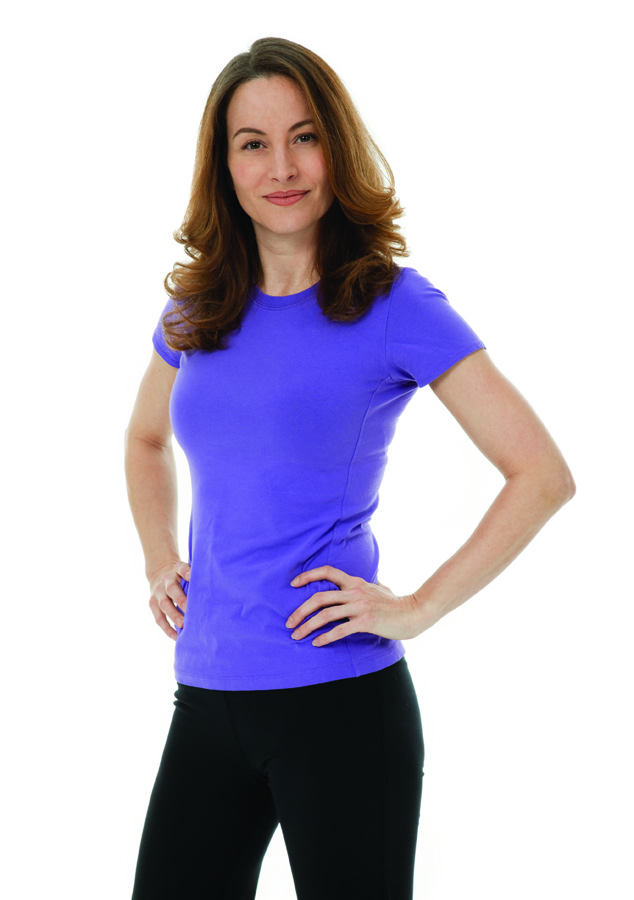Harrah’s in Lake Tahoe, CA, once ran a television/radio advertising campaign that involved three different jingles. The first featured Beach Boys-esque music and a deep male voiceover. The second was reminiscent of a 1980s female soloist and included an energetic male voiceover and the tag line “Oh Yeah!”. The third had early 2000s-inspired electronica with an autotuned voiceover and ending line, “Chill out and get your game on.” These Genergraphics Gingles were specifically designed to reach three different sets of key clientele simultaneously: Boomers, Gen X and Echo Boomers (also known as Gen Y).
Phil Goodman, president and CEO of Genergraphics, Carlsbad, CA, and coauthor of the new book Genergraphics Sales and Marketing from the 21st Century, believes targeting the generations with unique messages rather than one message is a valuable marketing technique that will help boost sales and branding. He states, “You can sell the same product or the same service to different generations, but you have to present it differently. Separation of marketing messages is key since different generations may buy the same product for different reasons.”
Do you segment your marketing campaigns with generation-specific messaging? This report will explain how and why your business should consider this form of targeted marketing.
Generation Brackets
Ask five experts to define the various U.S. generations, and you’ll likely get five very different answers. In general, experts use the rises and falls of birth rates (per the U.S. Census Bureau) to segment the various groups, but there is no consensus for the exact parameters. One major generational theory from William Strauss and Neil Howe, for instance, places the Millennials’ birth years from 1982 to 2004. Another cycle, established by the Pew Research Center, has different brackets: any time after 1980. Meanwhile, two experts (Nielsen and NMI) interviewed for this report believe this generation’s birth years start in 1977, while another feels the generation starting in 1977 aren’t Millennials at all, but Generation Y.
One might argue that there are about six or seven living generations:
• The G.I./Greatest Generation
• The Silent Generation
• The Baby Boomers
• Generation X
• Generation Y (which some also call Millennials, but some separate out as its own group)
• Generation Z or Homelanders
The GI or Greatest Generation was born approximately 1901 through 1924, according to Strauss and Howe, so the youngest are in their 90s today.
The Silent Generation (born 1925–1942, per Strauss and Howe) came next, and was “born into real crises,” says Nancy Trent, The Trent Trendspotter and founder and president of Trent & Company, Inc., New York, NY. “They were raised during the Great Depression, experienced natural disasters and wars (not unlike the Homelanders). The definition of American work ethic was developed during this period when people didn’t take anything for granted and valued what they had. Luxuries were not and are still not expected.”
Goodman feels a better framework for this part of the generational cycle is 1915–1935 for the GI/Greatest Generation, and 1936–1945 for the Forgotten or Silent Generation.
The Baby Boomers, Gen X and Gen Y/Millennials are likely your core shoppers, and the groups that will be focused in this article.
Best Practices for Generation-Specific Marketing
Before proceeding, one should understand that while the birth years are a handy framework for understanding the generational cycles, they aren’t the be-all and end-all of what makes a generation. Someone may have a birth year at the end of the Boomer Generation, but his or her mindset and consumer habits may fit better with Gen X. There’s crossover and some blurring of the generations at times.
So rather than simply focusing on birth years, what’s more important to understand each generation’s mindset is grasping their common attitudes, which often were shaped by the social and historical events that occurred when they came of age. Goodman argues that these years are largely when one is 12–17 years old. “Think about it. The biggest change in a person’s life—physically and mentally—occurs during their adolescent years,” he states. “If you don’t get to the mindset of a generation, you’re completely missing them.”
 Once you understand these characteristics and mindsets, one can approach each group in ways that work for that specific generation. These strategies will be broken down in the next few sections, but first, one must keep in mind some general best practices when putting together generation-specific marketing and advertising.
Once you understand these characteristics and mindsets, one can approach each group in ways that work for that specific generation. These strategies will be broken down in the next few sections, but first, one must keep in mind some general best practices when putting together generation-specific marketing and advertising.
For starters, Todd Pauli, partner, strategic marketing at The Shelton Group, Skokie, IL, tells clients to “stay true to their brand messaging and market their products and services in a straightforward, transparent way.” They can then highlight certain parts of their services or product offerings that would appeal to the life stages or interests of particular age groups.
Also, Pauli suggests that marketers be savvy about which marketing tool is used. Make sure it makes sense for the target audience. He states, “Using SnapChat to market a joint health product wouldn’t necessarily work because you would be reaching a younger generation than your target consumer, while Facebook could be a great fit because it’s used heavily by Baby Boomers and older Generation Xers.”
Trent says that marketing language should be carefully formulated for each generation. She states, “No generation likes to be knowingly sold. However, everyone wants to be seduced and think it was their idea. This requires a skilled marketer.”
Goodman says a big mistake is going overboard by trying to appeal to specific generations with clichés. “You have to be able to talk the language of each generation, but I don’t mean throwing in every single buzzword. Be yourself, but try to understand where they’re coming from when you’re marketing to them. Tune into the mindset of the target generation and the rest will follow.”
Pauli agrees that making generalizations about a particular generation in a promotion can be risky. “Few things are more cringe inducing and brand alienating than promotions that uncharacteristically try to sound young and hip…It never works,” he says. “Conversely, running campaigns aimed at older generations that stereotype some of the challenges that come with advanced age does little to inspire their brand loyalty. The most effective marketing rings true with its audience.”
Sherry Frey, senior vice president, Nielsen Perishables Group , Chicago, IL, says some generations are so large and diverse, that one might even consider additional targeting. For instance, “[The Baby Boomers are] not a homogeneous group, so savvy marketers are identifying one or several small, high-potency segments that will deliver a high return on investment for a limited, well-targeted spend,” says Frey, adding, “A small segment of 80 million Boomers provides a sizeable and scalable business opportunity.”
Now, let’s focus on the Boomers through Gen Y/Millennials as the key shoppers to reach in your marketing efforts.

Baby Boomers
The Baby Boomers are the largest and wealthiest generation in U.S. history. In general, says Jay Jacobowitz, president and founder of Retail Insights, Brattleboro, VT, this group “benefited from the economic boom after WWII. Vietnam was their shared experience, but technological advancement raised living standards to the highest in human history, and raised expectations for quality and ‘self-
actualization’ along with it.”
A March 2014 report from NMI and BoomAgers calls this group “Marketing’s Next Home Run,” as they will control 70% of the nation’s disposable income and account for about half of all consumer packaged goods spending (1). Of interest, Nielsen estimates that only 5% of advertising dollars are targeted to adults ages 35–64 (comprising Gen X and Boomers).
Boomers are also very brand loyal, with 44% buying the same brands on a regular basis and about 33% consistently choosing products from companies they trust (1).
Brand loyalty also crops up in some new findings from the 2015 Market LOHAS MamboTrack Health & Natural Consumer Annual Study (www.MarketLOHAS.com). Recent Market LOHAS MamboTrack Surveys and Natural Foodie Focus Group research suggests that the idea of buying “trusted brands” tends to resonate more with Baby Boomers and The Silent Generation than with Millennials.
According to Frey, “Boomers’ brand loyalty is influenced more by household size or need than predisposition.”
A key characteristic tying Boomers to the natural products industry is their interest in environmental issues. “Boomers will continue to drive environmental protection as they have done in the past via a strong volunteer ethic and an understanding of the connection of planetary and personal health,” states Steve French, managing partner at NMI, Harleysville, PA. NMI consumer data suggests that this group is  in the best financial position to make eco-friendly choices for the home, and is passionate about doing so due to the era when they came of age (the 1960s and 1970s). “The Civil Rights Movement and Vietnam War helped give rise to a generation that adopted and worked for political and social causes. The passion for the environment that was stoked then never went away,” according to an NMI report (1).
in the best financial position to make eco-friendly choices for the home, and is passionate about doing so due to the era when they came of age (the 1960s and 1970s). “The Civil Rights Movement and Vietnam War helped give rise to a generation that adopted and worked for political and social causes. The passion for the environment that was stoked then never went away,” according to an NMI report (1).
This opinion is bolstered by material from the 2015 Market LOHAS MamboTrack Health & Natural Consumer Annual Study. The group has found that Boomers are highly engaged consumers that focus on health and nutrition benefits, but also feel being “eco-friendly” is an important factor in purchasing decisions. Non-GMO and made in the United States/locally are also important factors for these shoppers.
Unlike previous generations, Boomers remain interested in keeping active and relevant—some delaying retirement and others retiring to explore a new passion. The interesting thing for this industry is that many are especially interested in using a healthy lifestyle (including choosing a nutritious diet) to support optimal wellness.
Since NMI consumer data suggest they want to be the “best they can be” at any age, most Boomers are very committed to living a healthy lifestyle (1). According to French, “Boomers are a transformational generation and their desire to remain active is fueling their drive to stay vital, independent and healthy and will drive new opportunities.”
According to Trent, “This demographic is invested, connected, active, demanding and delighted by what’s new and what’s next. They never followed the trends; they dictate them.”
|
Store Refresh Ideas
Store owners looking to reset or refresh their store may wonder how they can do so in a way that appeals to Boomers, Gen X and Millennials alike. The answer may not be what you expect. “You can’t do it all at once,” says Phil Goodman, president and CEO of Genergraphics. He suggests stores be themselves, and market to the various generations in distinct ways. Trent Trendspotter Nancy Trent, founder and president of Trent & Company, Inc., has a similar take on the matter. She advises stores to know their core shoppers, identify how consumers like to receive information and position the store accordingly. “You can’t be everything to everybody,” she says. But, there are certainly ways to make your store resonate with all health and wellness buyers. Jay Jacobowitz, president and founder of Retail Insights, advises stores to “make it fresh, make it uplifting and inspiring with more attention/investment in the physical facility.” He says stores should create spaces to “linger,” rest, counsel, study, sample and enjoy your store’s shopping experience. Steve French, managing partner at NMI, agrees that “it’s all about experience.” The better time shoppers have in your store, the more time they’ll spend shopping and the more loyal they will become. Part of this “experience” can be regular cooking demos, and this appeals to all generations. Sherry Frey, senior vice president at Nielsen Perishables Group, says, “Cooking and eating in is taking on a new meaning for older consumers who now have the time to cook and who are more nutritionally aware than when they were younger.” Boomers live active social lives and often entertain Generation Xers and Millennials, “a triple win if you can get your products into the occasion,” says Frey. She says Boomers are strong shoppers for baking-related goods and wine. Stores looking to attract younger consumers, Trent says, should offer “continually evolving spaces” where they can catch up on their cell phones and socialize “because they want to do things in packs.” Another creative idea from Trent is to create an area for selfies and other photos. Tie it to a promotion and let social media shares help create buzz and traffic to your store. According to information from the 2015 Market LOHAS MamboTrack Health & Natural Consumer Annual Study (www.MarketLOHAS.com), the health and wellness shopper craves information, and you can refresh your store with this in mind. The group suggests in-store retailer newsletters, value guides, product displays, effective retailer Web sites, social media and links, QR codes or mobile applications as ways to help “educate savvy health-conscious foodies about the products they buy from ingredient to sourcing to traceability.” Todd Pauli, partner, strategic marketing at The Shelton Group, says that stores resetting to appeal to younger generations should make information as accessible as possible. “Remember, these are the people who grew up with information instantly available,” he states. “Younger consumers are driven by information resources ranging from professionally accredited websites to opinions of other consumers, and all of the information is available to them while inside the store…Focus on growing store loyalty through the information you can access and the customer service you offer.” In-store promotions and events focused on healthy eco-products also appeal to all generations. Examples include Organic savings, October Non-GMO Month savings, tasty convenient gluten-free products for the whole family, eco household cleaning products for Earth Month or a Store Label Organics Category Sale. “This helps ‘brand’ the retailer as meeting the needs of healthy natural consumers and enhances shopper experience,” according to information provided by Market LOHAS and Mambo Sprouts Marketing Research & Insights. When considering a store refresh, also think about re-evaluating how your store shares its values with shoppers. “Be transparent,” French advises. “It’s no longer enough to say you are transparent. Consumers want proof and accountability. Prove your social and environmental responsibility through every avenue.” He says that shoppers tend to purchase from businesses whose values are most like their own, so “know your consumer and make sure you are aligned.” |
For this reason, Trent’s advice for marketing to Boomers includes the five R’s:
• Respect: “They have earned their stripes, do not patronize them,” says Trent.
• Results: Boomers tend to be highly educated and want to know that products work, Trent points out.
• Reassurance: Says Trent, “In a society that celebrates youth, even a Boomer confident in accomplishments risks feeling vulnerable about their age.”
• Relaxation: Boomers understand that relaxation is needed for restoration and longevity, and many report having less stress and getting more sleep as they age (1).
• Realization: Like French of NMI indicated, Trent says Boomers realize their health will determine how they live for the next 20 to 30 years. “They need to make changes in their diet and fitness routines. They are not interested in fad diets, miracle remedies, or deprivation of any kind,” she states. “They make choices that give their bodies the best opportunity to live a longer and healthier life.”
Circling back to Trent’s sentiment that Boomers are trendsetters, French says marketers can’t forget that “Boomers have always had a pioneer spirit.” They aren’t afraid to reinvent themselves and try something new.
An example is that Boomers readily embrace new technology, and are avid computer, tablet and smart phone users. They also are interested in managing their health and wellness with technology (1), so reaching out to them digitally may be a smart strategy. In fact, Nielsen data suggest that one-third of all online and social media users are Boomers, and “close to another third of them—29 million—say they are heavy users of the Internet with over eight million of them spending 20+ hours a week online…half a work week!” says Frey.
In addition, NMI data show that half of all Boomers use Facebook, which is an 88% growth from 2008 to 2013 (1). Adds French, “Boomers are engaged in social media; opportunities for ‘tools’ to expand this social connection will grow.”
But don’t discount television outreach, as Frey says that Boomers “spend 174 hrs/month watching TV, (second only to ‘traditionalists’ 65+ up) and significantly more than Gen X and Millennials.”
Trent offers an interesting marketing tip for this group. While younger generations may seek out the opinions of peers before investing in a product, Boomers and X-ers are impressed with celebrity endorsements. Gen Y and Millennials aren’t as much.
Boomers also like to see themselves represented in advertising. “Put them in the ads!” says Frey. “More than half of Boomers worldwide (51%) say advertising messaging is not resonating because they don’t see ads that reflect older consumers.”
In addition, French believes Boomers are very independent and like to learn about new products and services on their own. “Let them feel they discovered something on their own and they will be more loyal and likely to share their ‘discovery’ with others,” he suggests.
A marketing strategy that appeals to members of all generations is coupons, according to the 2015 Market LOHAS MamboTrack Health & Natural Consumer Annual Study (www.MarketLOHAS.com). Information provided by Market LOHAS and Mambo Sprouts Marketing Research & Insights suggests that coupons are an effective promotional technique that appeals to nine in 10 health and natural consumers across all generational segments. Since health and wellness shoppers tend to regularly seek out information about products, the group says a successful brand-building coupon promotion should offer information that engages shoppers with brand or product information like whether the ingredients are organic or non-GMO, specific health benefits and how the product was made rather than simply offering a savings or discount.
As for Baby Boomers and Greatest Generation consumers, 40% identified coupons as a key brand purchase factor in the 2015 Market LOHAS MamboTrack Health & Natural Consumer Annual Study.
One last interesting characteristic is that “Boomers are a different type of grandparent than you’ve ever seen before,” says Goodman. “As grandparents, they have a great deal of influence over the younger generations. They are closer to their grandchildren—both financially and in lifestyle—than any other generation in history.”
Indeed, many members of Gen Y left home only to move back in with their Boomer parents and the oldest Gen Y consumers may have brought their children with them. According to information from Frey, 30% of Boomers have a Millennial/Gen Y member living at home. Other Millennials are using Boomers for childcare. This makes for an interesting dynamic where grandparents are influencing the goods bought for the youngest generations in ways we haven’t seen before.
So in the end, Jacobowitz says that to reach Boomers, the most successful messaging will “appeal to the desire for personal, individualized contact and attention.”
Generation X
Members of Generation X were born after the post-World War II baby boom (mid-1960s) until the late 1970s. Some end the birth years of Gen X at 1976, while others place them later at around 1982, but nearly everyone agrees the group was defined by a certain level of uncertainty. Says Trent, “This generation went through the biggest change of American life where they were forced to deal with issues including war, sexually transmitted diseases and integrated schools.”
Jacobowitz outlines some general characteristics that hold together this group: they were too young to be drafted for the Vietnam War, and many came of age when President Ronald Reagan was in office. The fall of the Berlin Wall and the end of the USSR was the largest geo-political event of their lifetimes. “They moved the ‘misery index’—the combination of inflation plus interest rates—from a high of 21.98% in June 1980 under President Carter to the low-interest rate, low-inflation environment we still enjoy today,” he states.
From a marketing standpoint, Trent says they want to see the evidence and to be treated like a peer. Goodman offers similar advice: “You have to be able to really prove something when you sell Gen X a product or service.”
Part of the reason, according to Goodman, is that Gen X is much more cynical about products, advertising and services because they saw a lot of gimmicky marketing during their childhood.
As for product types that appeal to this group, both Trent and French hit on a similar penchant of this group: appearance-driven products. According to Trent, the fastest growing category among Gen X shoppers is anti-aging products.
 French agrees, saying, “They are appearance driven as a hectic lifestyle and entry into their 40s has taken its toll—personal care, cosmeceuticals or anything to assist them with their appearance will be welcome.”
French agrees, saying, “They are appearance driven as a hectic lifestyle and entry into their 40s has taken its toll—personal care, cosmeceuticals or anything to assist them with their appearance will be welcome.”
This group fears looking and getting old, so “show them how to be healthier and you will have a friend for life,” says Trent.
Gen X is likely working to balance work/home life, so French says “anything to ease a child-friendly lifestyle will benefit them.” In addition, he believes that products that are convenient, calorie friendly, de-stressing, taste good and have immunity benefits play well with this crowd.
As for technology, Generation X can afford technological devices and may own more than any other generation. “Therefore, they can be reached through apps, social media and especially LinkedIn,” says French.
The 2015 Market LOHAS MamboTrack Annual Survey found that Gen X consumers tend to be less price conscious than other groups and are most interested in ingredient sourcing and traceability, often researching products and companies online or using QR codes.
Generation Y and Millennials
Those trying to define Generation Y may put the years around 1977–2005 or so, making for a group that is approximately 83 million strong. Some use the terms Gen Y and Millennials interchangeably, but others like Goodman prefer to break it apart. Millennials, he feels, were born 1995 through the present, coming of age in the new Millennium. Nielsen, too, breaks apart Gen Y into Older Millennials (currently ages 28–36) and Younger Millennials (currently ages 18–27).
Generation Y, according to Jacobowitz, came of age as the Internet changed the world, “from the ubiquitous availability of knowledge to the way we conduct commerce.” As a result, they are highly comfortable with technology, expect fast apps with a good user experience, are used to a fast-paced lifestyle and often make quick decisions. Some believe they have a short attention span, and appreciate convenience.
Their parents are most likely to be Baby Boomers, and they share many characteristics with them, leading some to dub this group, Echo Boomers. Jacobowitz calls Gen Y “a ‘chip off the old block’ of the Baby Boomers, with an even greater sense of entitlement to premium quality of life.”
This group is often said to “have a mind of its own,” which can be both a positive and a negative trait. Trent says they are “wired to try new things, break boundaries, push limits, change tradition and set new rules. They are also redefining the workplace; they are the first generation in which a bachelor’s degree is simply not enough.” As they come of age, the management of Gen Y and Millennials in the workplace is becoming an issue many employees are dealing with.
Goodman believes Gen Y as shoppers present an opportunity for  growth in this industry. “When they go into a store and they want to know more, they’ll take more time to read the labels,” he states.
growth in this industry. “When they go into a store and they want to know more, they’ll take more time to read the labels,” he states.
Trent adds that retailers’ futures may lie with this group. “Get the younger audience and keep them for life,” she states. “They vote with their dollars and care about causes,” so make sure your mission is clear and accessible to them.
A key thing to remember about this generation is that they strongly value the opinions of friends and peers, and are likely to go online to hear others’ opinions and reviews and share their own opinions. “If their friends are buying something, they’ll take a good hard look at it,” says Goodman.
If a product, service or experience is great, news travels fast in this group; if it isn’t, news travels even faster, says French.
For this reason, Trent says every dollar spent by Gen Y influences another $3.50, so “if you want to sell to them, you need to earn their respect and it’s worth it.”
Trent says stores and marketers can take advantage of this mindset by creating opportunities for Gen Y to shop with their friends. “Make the shopping experience fun and you will draw them in like a magnet,” she states. “They want to do things with their friends and you will get two or a lot more for one.”
Gen Y consumers also want to know that products work. States Goodman, “You’d better be able to back up what you say because you don’t get a second chance with this generation.”
French agrees, noting, “Millennials demand genuineness and transparency from companies” and they value sustainability and products said to positively affect one’s health. He believes that this generation is likely to buy products from companies who donate to worthwhile causes: “being charitable is a positive in their eyes.”
This lines up with the 2015 Market LOHAS MamboTrack Health & Natural Consumer Annual Study, which suggests that a brand’s history or tradition (e.g., Since 19___) speaks to Millennials and gives it credibility. At the same time, the group suggests that companies stay current and update their messaging, so that it isn’t perceived as dated or “old-fashioned.”
As for product categories drawing this consumer, Jacobowitz believes that younger shoppers are “driving the trend for raw, Paleo, unrefined, close-to-the-source, unbranded or ‘discovered’ rather than big, corporate mega-branding.” He also believes grassroots marketing resonates more with this group than major network television advertising.
This group also believes eating organic is important to being healthy, and Gen Y shoppers tend to be consumers of organic foods and beverages, according to NMI and Nielsen GameChangers2014 Market Trend Highlights.
A common dig against this group is that they’ve had trouble finding steady career jobs with good incomes. Possibly for this reason, the 2015 Market LOHAS MamboTrack Health & Natural Consumer Annual Study found that this generation is price and value conscious and uses coupons. “Around four in 10 younger Millennial and younger Gen X health and natural shoppers reported using more coupons (last six months) compared to fewer than one in six Baby Boomers and Greatest Generation reporting higher usage,” the group found.
More than half (57%) of Millennials said they used cell phone or mobile grocery coupons, while few Baby Boomer and Silent Generation shoppers said they did.
 The Next Gen
The Next Gen
Referred to by some as the Homelanders or Generation Z, the events influencing this group (born 2005–present) are unfolding before our eyes today. They’ve never known a world without the Internet and have been playing with electronic devices since infancy. “They are almost the complete opposite of their immediate predecessors. I expect these digital natives to be more humbled and troubled than Millennials,” says Trent.
While it’s too early to know their shopping behavior, Trent believes they will be “cautious and frugal and concerned with causes—at least I hope so.” She also suspects they will demand online shopping with items delivered to their door within 24 hours. WF
Reference
1. NMI and BoomAgers, “Marketing’s Next Home Run,” Mar. 25, 2014, www.nmisolutions.com/opt/bmragr/boomagers.pdf, accessed Dec. 30, 2014.
Published in WholeFoods Magazine, February 2015











